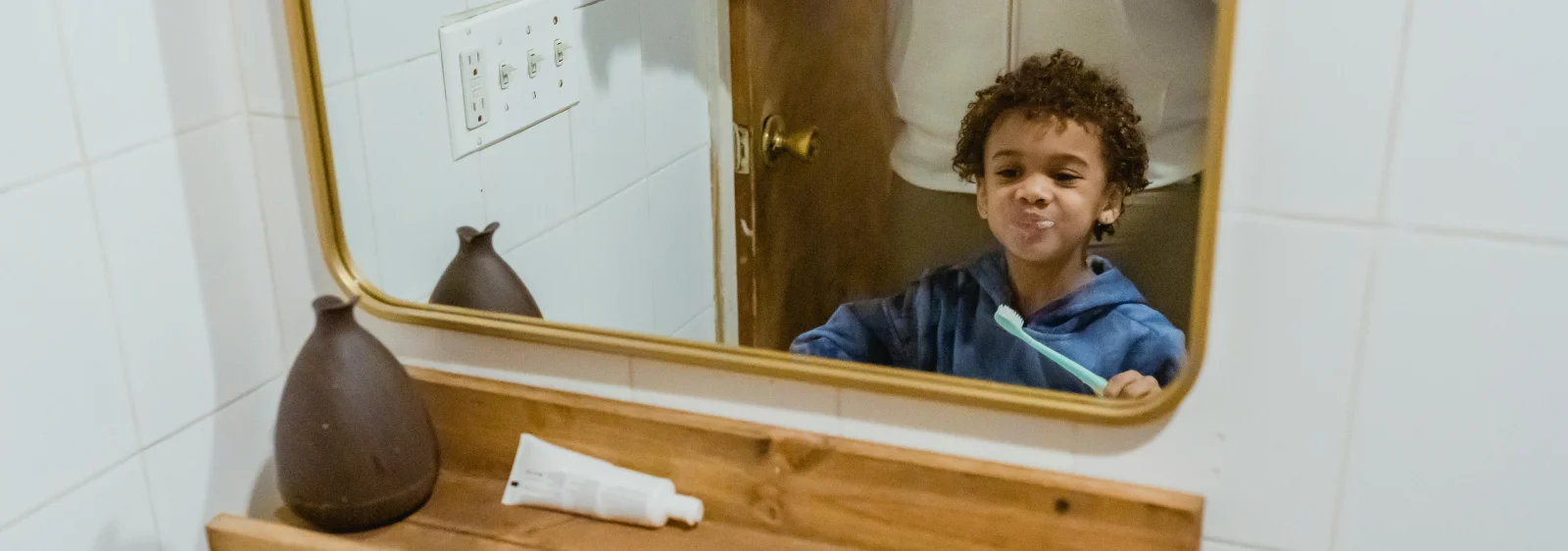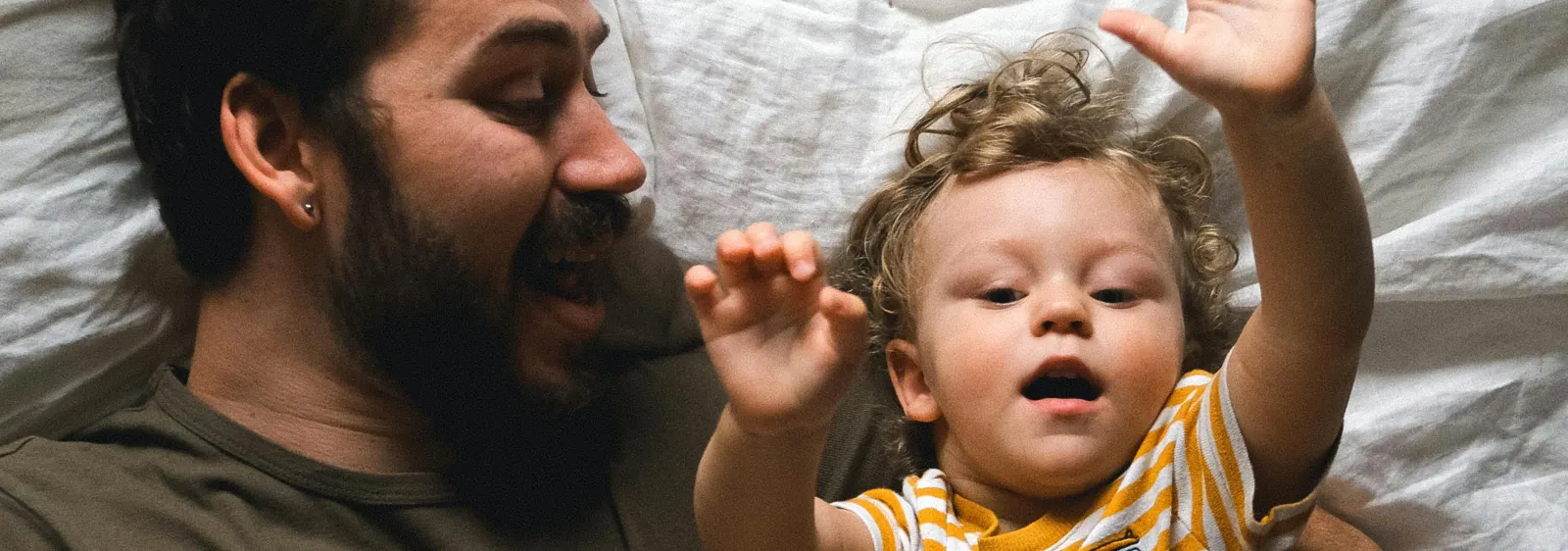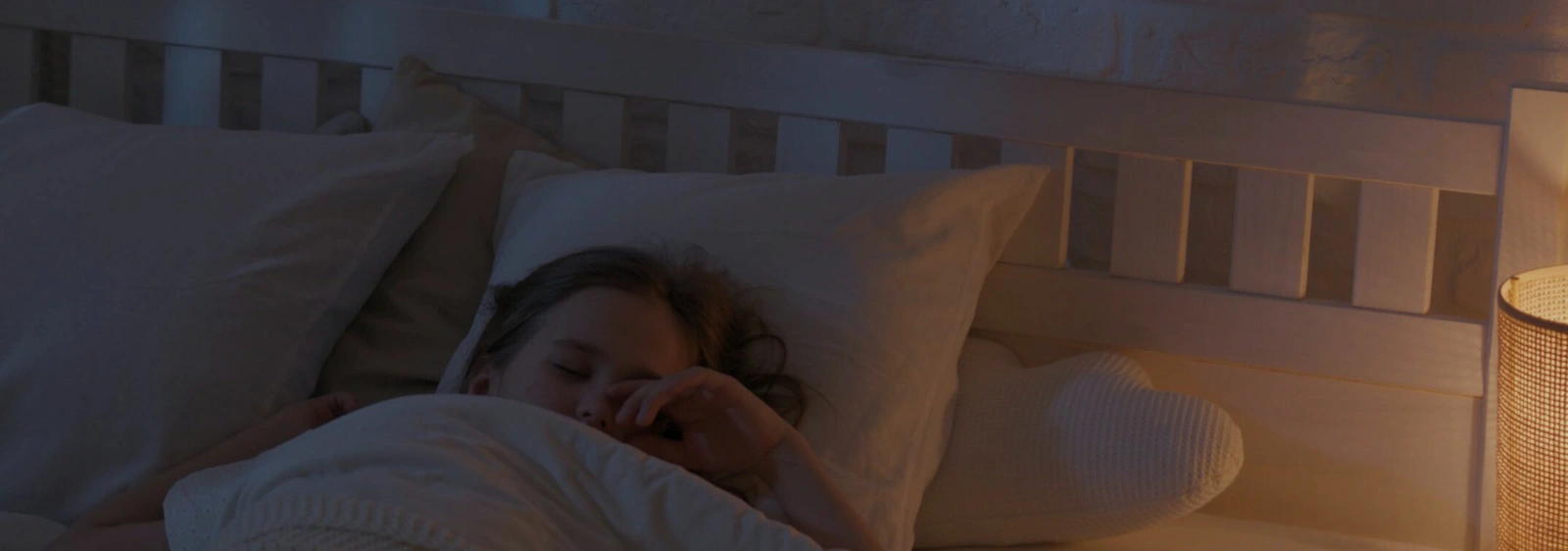Bedtime can often feel like a battleground for parents, with the struggle to get little ones to settle down and drift off into dreamland. Setting a consistent nightly bedtime routine can make an huge difference, as proven by various studies. To be considered consistent, a bedtime routine must be repeated at least 5 nights per week. We know this is not easy, but we are here to help!
Below you’ll find some science-based information about bedtime routines for toddlers and preschoolers, as well as tips for creating an effective routine that works for your family.
Scientific evidence on the importance of bedtime routines for kids
We all know that having a bedtime routine is important for a number of reasons, and science has already shown just how important it is.
A nightly bedtime routine can promote healthy sleep, language development, literacy, and overall emotional and behavioral development in early childhood. It must include 4 components: healthy and appropriate eating, hygiene (washing hands, brushing teeth, putting on pajamas…), communication (reading or singing), and physical contact such as cuddling or massaging.
A consistent bedtime routine of 5 or more nights per week has been associated with better sleep, better social-emotional development, and less parental stress in young children.
A consistent bedtime routine for children from 0 to 5 years of age is associated with more desirable sleep outcomes for both the child and the parent.
Establishment of bedtime routines in the first two years of life has been shown to predict better sleep outcomes, such as fewer nighttime awakenings and sleep problems.
Okay, so what can we do to establish a good bedtime routine that can help infants and toddlers sleep better, that can help with things like how long it takes them to fall asleep, how often they wake up at night, and how long they sleep?
There is no one-size-fits-all approach, and whatever you do will need to be tailored to your family’s routines. But as Mindell and Williamson’s (2018) study explains, there are 4 components that need to be incorporated into your little one’s bedtime routine:
- Nutrition
- Hygiene
- Communication
- Physical Contact
A good bedtime routine helps children wind down, signals their body that it’s time to sleep, and can improve sleep quality and duration. Below is a bedtime routine based on general pediatric recommendations and scientific understanding.
A bedtime routine in four steps
Establishing a calming bedtime routine can make a big difference in helping your little ones settle down for a restful night. There are a few key parts to getting it right, but what you do in each part or component needs to be tailored to your family’s context. Here’s a 4-step routine to help you create your own calm and restful bedtime for kids.
1. Nutrition to support your child’s sleep

A light meal
What your child eats before bedtime is important. It needs to be light and healthy, and enough to prevent hunger in the middle of the night. It depends on your child’s exact age and nutritional needs, but this is the golden rule: avoid sugary or stimulating foods close to bedtime.
2. Hygiene

A warm bath
Not required, but a gentle, warm bath will help relax the body. This can be a soothing ritual and also serves as a transition to bedtime. Dim the lights to make it extra calming.
Put on the pajamas
If your child loves pajamas, they will want to wear them! Let them choose their favorite set – maybe a superhero or princess. And don’t forget to compliment them on how cool they look to make this a wished-for moment. It’s a wonderful way to transition to bedtime, wrapping them up in comfort.
Tooth brushing
Brushing teeth is super important and always a part of the bedtime routine. Make it fun by singing a song or making silly faces in the mirror as you brush. It’s a great way to teach your little one about keeping those pearly whites clean and healthy!
3. Communication & physical contact

Singing a song, reading a bedtime story, or telling tales of adventure before sleep can do wonders for your little one! Not only does it help them snooze for longer, but it also sparks their imagination and helps their brains grow big and strong. And when you snuggle up close during storytime, it makes them feel super loved and safe.
Cuddling or holding
After getting into pajamas, spend time holding your child or cuddling with them in a rocking chair or on their bed. This physical closeness can be very comforting and is essential for emotional development.
Quiet bedtime conversation
Spend time talking with your child about their day or telling stories. This can be a calm, engaging activity that strengthens your bond and allows them to process their day.
Read a bedtime story
Reading a bedtime story helps with language development and provides a peaceful way to end the day. Choose soothing stories with gentle narratives. You can use a physical book or search for Vooks stories on KidsBeeTV. Vooks stories are slow-paced, with soft colors, read-aloud text and narration, and subtle animation to avoid overstimulation. Alternatively, you can play Vooks stories as an audio book by simply turning off the screen. KidsBeeTV’s screen-off mode allows you to play any content with the screen turned off.
Lullabies or soft music
Singing a lullaby or playing soft music while holding your child can further soothe and relax them, reinforcing the feeling of safety and security. Again, remember you can play lullabies from KidsBeeTV with the screen turned off.
4. Preparation for sleep

Lights out
Dim the lights and use a nightlight if necessary. Establishing a dark, quiet environment helps encourage sleep and maintains the body’s natural circadian rhythm.
White noise (or pink or brown)
Consider adding white, pink, or brown noise to your child’s bedtime routine. These soothing sounds can help mask other noises and create a calming atmosphere that may improve sleep quality. Scientific studies suggest that such consistent, ambient sounds can enhance sleep by reducing the time it takes to fall asleep and minimizing night wakings. Remember, though, that every child is different, and these sounds may not be effective for everyone. It can be a good idea to try them out and see if your child finds them soothing. You’ll find a lot of options on KidsBeeTV, and you can let it play for an hour or two if you want to.
Final goodnight
Once you’ve snuggled your little star into bed, seal the day with a sweet goodnight kiss and some gentle, reassuring words. It’s like a cozy blanket of love that helps them feel safe and cherished as they drift off into dreamland. Sweet dreams, little one!
> Additional tips <
Consistency
Keep the routine consistent every night to help your child internalize these healthy habits.
Adaptability
Be sensitive to your child’s responses to different activities. Some children might need more or less time with certain aspects of the routine, especially as they grow and their needs change.
A little help from KidsBeeTV for your child’s bedtime

Bedtime should be a peaceful and bonding experience for both parents and children. That’s why we’ve developed a range of features specifically designed to make bedtime blissful and effortless.
Best Lullabies for Kids
Our collection of lullabies offers a delightful array of melodies that are sure to soothe your child to sleep. From gentle instrumentals to sweet lyrics sung by beloved characters, our lullabies create a calming atmosphere that helps little ones relax and unwind after a busy day of play. If you’re searching for “best lullabies for kids” or “calming bedtime music for toddlers”, KidsBeeTV has you covered.
Numerous studies have explored the benefits of music and sound on sleep quality, especially in children. Playing soft music or lullabies at bedtime can help reduce stress and anxiety in children, leading to improved sleep quality, as well as helping them fall asleep faster.
White Noise for Babies, Toddlers & Preschoolers
In addition to lullabies, KidsBeeTV offers a variety of sleep sounds designed to promote deep and restful sleep. Scientific research has shown that certain sounds, such as white noise, pink noise, and brown noise, can help mask disruptive noises and create a more peaceful sleep environment. By incorporating these sleep sounds into your child’s bedtime routine, you can help them achieve a more restful and rejuvenating night’s sleep.
Reducing Screen Time for Kids
We understand the importance of minimizing screen time before bed, which is why KidsBeeTV offers a screen-off mode that allows you to enjoy our soothing audio features without any visual distractions. Simply activate screen-off mode and let our lullabies and sleep sounds create the perfect ambiance for a peaceful night’s sleep.

At KidsBeeTV, we’re dedicated to making bedtime a magical and stress-free experience for families. With our collection of lullabies, sleep sounds, and screen-off mode, we’re here to help you create a bedtime routine that your child will look forward to every night. Say goodbye to bedtime battles and hello to sweet dreams with KidsBeeTV!





